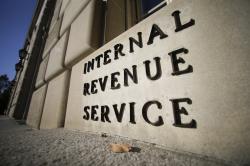 The IRS has started sending out letters to employers who have failed to comply with the Employer Shared Responsibility provisions under the Affordable Care Act for the year 2015.
The IRS has started sending out letters to employers who have failed to comply with the Employer Shared Responsibility provisions under the Affordable Care Act for the year 2015.
The IRS seems to be moving forward with notifying employers after attempts to repeal and replace the ACA failed in Congress and since there has been no further rule-making, guidance or legislation that rolls back enforcement of the employer mandate.
The IRS will send Letter 226J to applicable large employers (ALEs) if it determines that at least one full-time employee received a subsidy in 2015 in a marketplace to purchase qualified health plan coverage, or if the employer didn’t offer the employee affordable coverage or offered coverage that failed to meet the minimum value requirements as set out by the ACA.
You can find a copy of the letter here: https://www.irs.gov/pub/notices/ltr226j.pdf
As part of publishing Letter 226J, the IRS posted new frequently asked questions on its website to provide guidance to employers that receive the notification. The FAQs:
Set out the process for an employer to follow when responding to the letter before any penalties are assessed and before the IRS issues a notice for demand of payment.
State that employers will generally have 30 days from the date of the letter to respond to the IRS regarding its assessment. Failure to respond timely may result in the IRS assessing the penalty and issuing a notice and demand for payment with no further opportunity for the ALE to respond.
Describe Notice CP 220J, which the IRS will send out after Letter 226J. CP 220J is a formal notice and demand for payment of a penalty.
The IRS also noted in its FAQs that it would start sending out the first Letters 226J to ALEs in “late 2017.”
The IRS plans to issue Letter 226J to an ALE if it determines that, for at least one month in 2015, one or more of the ALE’s full-time employees was enrolled in a qualified health plan for which a premium tax credit was allowed (and the ALE did not qualify for an affordability safe harbor or other relief for the employee).
The IRS will determine whether an employer may be liable for an employer shared responsibility payment, and the amount of the potential payment, based on information reported to the agency on Forms 1094-C and 1095-C and information about the ALE’s full-time employees that were allowed the premium tax credit.
Disputing the IRS assessment
Employers that want to dispute the letter must:
Complete, sign and date a Form 14764, Employer Shared Responsibility Payment (ESRP) Response, and send it to the IRS by the due date along with a signed statement explaining why the employer disagrees with part or all of the proposed ESRP.
Ensure that the statement describes changes, if any, the employer wants to make to the information reported on Form(s) 1094-C or Form(s) 1095-C.
If, after receipt of CP 220J, the employer disagrees with the proposed or revised employer shared responsibility payment, it may request a pre-assessment conference with the IRS Office of Appeals.
2015 penalties
“A” Penalty – “No Coverage” Penalty. This penalty applies when an ALE does not offer at least 70% of full-time equivalent employees (FTEs) and their dependent children minimum essential coverage and at least one FTE receives a subsidy in a marketplace to purchase qualified health plan coverage. Amount: The penalty is $173.33 per month (or $2,080 per year) multiplied by the total number of FTEs.
“B” Penalty – “Offer Coverage” Penalty. This penalty applies when an employer offers at least 70% of FTEs and their dependent children minimum essential coverage but the coverage is not affordable, does not provide minimum value or excludes 30% or fewer FTEs and one (or more) of those FTEs receive a subsidy in the marketplace.
Amount: The penalty is the lesser of:
$260 per month (or $3,120 per year) multiplied by the total number of FTEs who receive a subsidy; or The “A” penalty.
